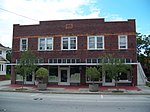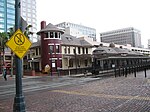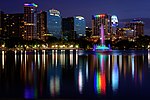Webster University Orlando
1991 establishments in FloridaEducational institutions established in 1991Florida school stubsPrivate universities and colleges in FloridaSouthern United States university stubs ... and 4 more
Universities and colleges in Orlando, FloridaWebster UniversityWikipedia external links cleanup from May 2019Wikipedia spam cleanup from May 2019
Webster University Orlando is a university campus located in downtown Orlando, Florida. This campus location is an extended campus of Webster University main campus in St. Louis, Missouri. Previously, Webster University operated two extended campus locations in the Orlando metro area; one in Longwood and one near Williamsburg. In June 2016, those two campus location resources were combined into one more robust campus in downtown Orlando near the Amway Center. Currently, they have campuses positioned strategically across the U.S., including Florida.
Excerpt from the Wikipedia article Webster University Orlando (License: CC BY-SA 3.0, Authors).Webster University Orlando
Division Avenue, Orlando
Geographical coordinates (GPS) Address Nearby Places Show on map
Geographical coordinates (GPS)
| Latitude | Longitude |
|---|---|
| N 28.540675 ° | E -81.385267 ° |
Address
S. Division Ave. and W. Pine St.
Division Avenue
32801 Orlando
Florida, United States
Open on Google Maps








